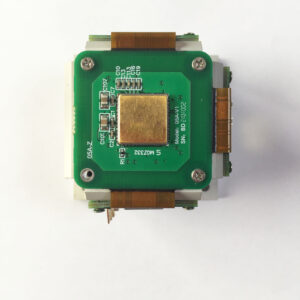MEMS IMU: Unlocking Precision in Motion Sensing
Introduction: In the realm of motion sensing technology, MEMS IMU (Micro-Electro-Mechanical Systems Inertial Measurement Unit) has emerged as a game-changer, revolutionizing a wide range of applications. From smartphones to drones and virtual reality systems, MEMS IMUs provide accurate and reliable measurements of motion and orientation. In this article, we will explore the world of MEMS IMUs, delving into their mechanics, applications, and the impact they have made on various industries.
Understanding MEMS IMU: MEMS IMU is a compact device that combines multiple micro-electromechanical sensors to measure and quantify motion-related parameters. These sensors typically include accelerometers, gyroscopes, and magnetometers. By integrating these sensors into a single unit, MEMS IMUs provide comprehensive motion sensing capabilities.
Accelerometers measure linear acceleration, allowing detection of changes in velocity or tilt. Gyroscopes, on the other hand, detect angular velocity and rotational movements. Magnetometers measure the surrounding magnetic field, aiding in orientation and direction determination. By combining data from these sensors, MEMS IMUs can accurately track changes in position, orientation, and velocity.

Mechanics of MEMS IMU: MEMS IMUs employ tiny mechanical structures fabricated using microfabrication techniques. These structures, often constructed using silicon-based materials, are capable of sensing and measuring minute changes in motion. When subjected to acceleration or rotation, the mechanical structures within the IMU experience deflections, which are converted into electrical signals by integrated microsensors.
These electrical signals are then processed and analyzed by dedicated signal processing circuits, which extract precise motion-related information. The resulting data can be used to determine the position, orientation, and motion of an object or device with remarkable accuracy.
Applications of MEMS IMU: MEMS IMUs have found widespread use in numerous industries due to their compact size, low power consumption, and cost-effectiveness. One of the most notable applications is in consumer electronics, such as smartphones, tablets, and wearable devices. MEMS IMUs enable screen rotation, gesture recognition, and augmented reality experiences, enhancing user interaction and immersive capabilities.
In the automotive industry, MEMS IMUs play a vital role in advanced driver assistance systems (ADAS). By providing accurate measurements of vehicle motion, MEMS IMUs contribute to features like electronic stability control, rollover detection, and adaptive cruise control, ensuring safer and more efficient driving experiences.
MEMS IMUs are also extensively used in the aerospace and defense sectors. They enable precise navigation and stabilization of unmanned aerial vehicles (UAVs), ensuring smooth flight control and autonomous operation. In aerospace applications, MEMS IMUs are employed in aircraft attitude and heading reference systems (AHRS), aiding in flight navigation and control.
Furthermore, Ericco MEMS IMUs have made significant contributions to the field of robotics. They provide critical motion sensing capabilities for autonomous robots, enabling them to perceive their environment, avoid obstacles, and perform complex tasks with dexterity and precision.
Future Prospects of MEMS IMU: As technology continues to advance, MEMS IMUs are expected to witness further improvements. Ongoing research aims to enhance the accuracy, reliability, and integration capabilities of these devices. Researchers are also exploring new applications, such as healthcare monitoring, virtual reality systems, and Internet of Things (IoT) devices.
Conclusion: MEMS IMUs have revolutionized the field of motion sensing, enabling precise measurements of acceleration, rotation, and orientation. Their compact size, low power consumption, and cost-effectiveness have made them indispensable in a wide range of applications, from consumer electronics to automotive and aerospace industries.
175
0
0


Comments
All Comments (0)